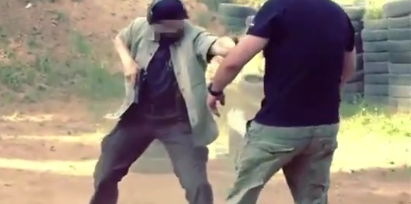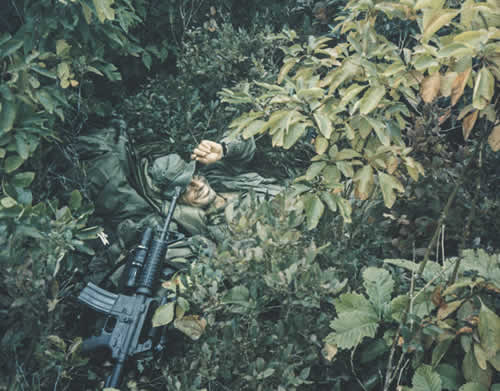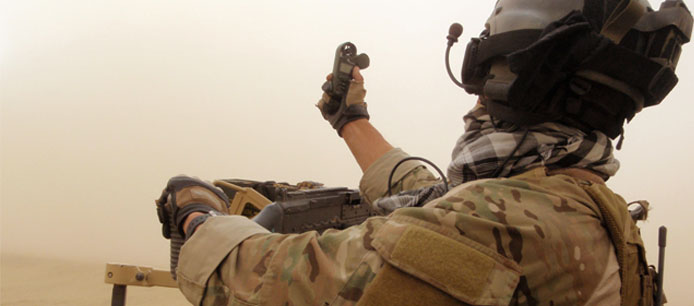
Reconsidering the Designated Marksman
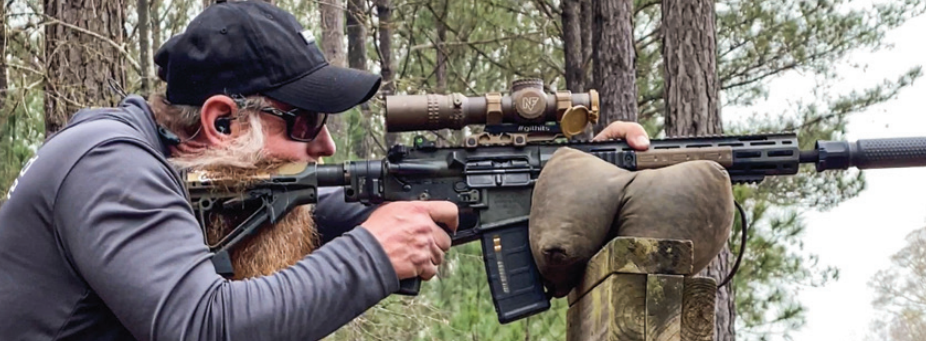
The guy who wrote the Army manual on rifle marksmanship has thoughts on improving the DM role.
Story and Photos by Ash HessThe role of the designated marksman, or DM, has been around since firearms came into battle. Out of
every formation, someone always rises to the top when it comes to shooting prowess. The difference between this individual and a sniper is that the DM is part of the squad, not an attachment. This is clear in the US Army’s field manual, ATP 3-21.8 Infantry Rifle Platoon and Squad. The DM does not operate independently of the squad, nor engage targets at extreme range. The DM will have an “optically enhanced rifle” compared to the rest of the squad and, more recently, a specialized rifle for the role.
I served as a squad designated marksman (SDM) over the course of two deployments in Afghanistan. While
most of the formation had red dot optics, I first had an Advanced Combat Optical Gunsight (ACOG), then a low power variable optic. Since then, I founded and built a company that runs matches focused on the role. You can say I have been living this life for over a decade, and I have learned a thing or two.
THE FIRST IS that many are misguided about the role. They will say the DM’s role is to engage targets from 300 to 600 yards. That leads them to look for optics and rifles that are effective at those ranges. This is false. The DM is part of the squad, which means they must be able to engage from 0 to 600 yards. The DM must be effective for any mission assigned to the squad, from room clearance to mountain warfare.
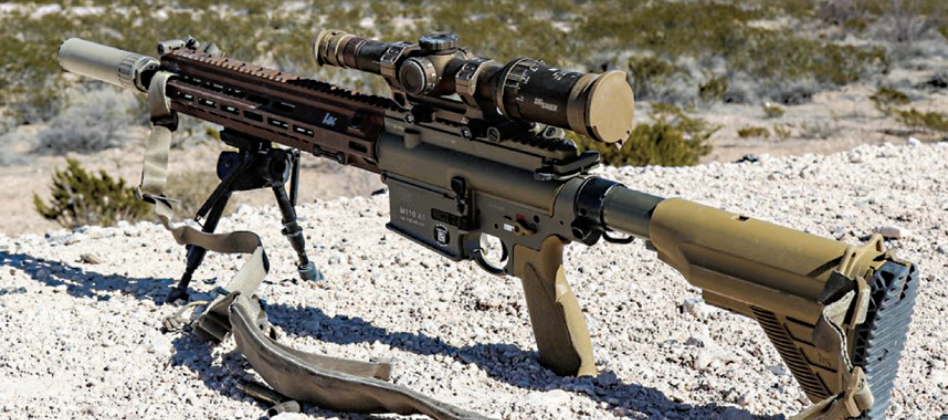
Engaging targets from 300 to 600 yards is a whole different equipment set. Those who think this way create
the situation where the already limited members are down a man due to not being able to conduct one or more missions effectively. The US Army recognized this (eventually) and chose a 1-6x optic for their Squad Designated Marksman Rifle (SDM-R). It was a fight, though, as the first version had a 3-9x optic. While much of the fighting in the cities of Iraq was conducted using 4x ACOGs, few, if any, would recommend that much magnification for close work.
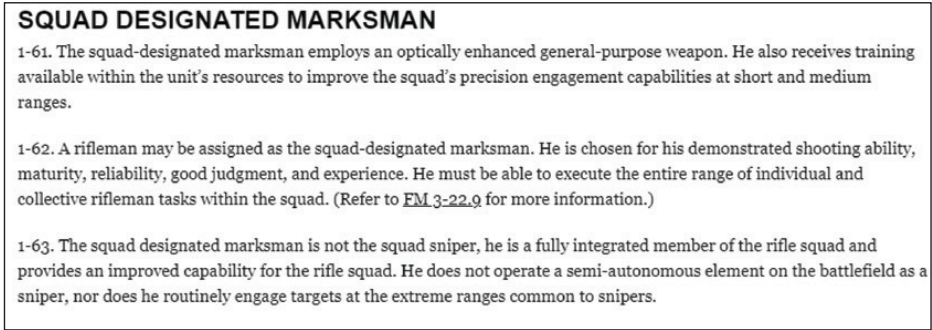
Second, the role is highly overrated. In my own experience and in talking to many other veterans, not one time has the DM changed the outcome of a fight. There are stories of a good shooter changing the outcome, but it’s usually someone other than the one assigned as the DM. As part of the squad, odds are low that one person will be in the proper location to get the call from the squad leader to engage a low-probability-hit target.
Third, training for the role comes from inside the unit, as there are either no or limited training opportunities for those assigned as DM. Training will then come from one of two places: the squad leader and their understanding of ballistics, complex engagements and equipment use, or the unit’s sniper section. This results in two different DMs.
The first type is trained by the squad leader (SL). Sometimes, the SL has a good working knowledge of needed skills but keeps the DM focused on squad things. This yields a DM who focuses on door-kicking and
shoots distance sometimes but does not practice enough to really be a force multiplier when the moment comes.
The second type goes and trains with the snipers at their ranges. He or she focuses on distance shooting
and begins to think like a sniper. You will hear them trying to separate from the squad to overwatch or otherwise act like a baby sniper. This DM does not focus on close work and does not integrate with the squad effectively. Either way, the training does not properly prepare them for the role. It is not an integrated approach based in doctrine, which means DMs from squad to squad and company to company will be different. That makes it impossible to gauge the effectiveness at any level.
Finally, the selection for the role is unsatisfactory. Everyone in a squad has a job or two. Many times, the role will be assigned to the best shooter in the squad based on qualification scores. While there is merit in this, it is not the way. As a former senior noncommissioned officer, I do not want my squad or team leaders focusing on a single target to eliminate. They need to be leading, as their title implies. Obviously, the machine gunner and the grenadier have jobs to do too. This leaves the rifleman, the newest person to the squad, with the space to do the job. Odds of this being your best shooter are low, but it is their job to shoot whatever the squad leader tells them to. Thus, the wrong person gets selected for the job. The follow-on to this is that by the time someone gets to the level of being a good DM, they are promoted away from the role.
MY MENTOR ONCE told me to not mention problems without a proposed solution. So here are my thoughts on DM fixes. Onboard every new member of the force with DM training. This should include complex engagements, ballistics, stability and environmental effects. This would effectively train all members of the unit in these skills and over time the effectiveness of the squad would increase. Imagine having 10 DMs versus one. One, though, has the rifle for it. This also adds redundancy because rather than a single point of failure, anyone can grab the DM rifle and do excellent work. Next, training for all should go out to 600 meters or yards. Then and only then will leaders know who is good. It does not have to be often, but it needs to be done. This profoundly changes the squad dynamic, the role and use of the DM, and has the added benefit of becoming a feeder for sniper sections.
While this article focuses on military application, it can apply to law enforcement. The DM role might
be as close as 100 yards, but the rules still apply. The odds of the trained officer being on the scene to do a low-probability hit are low. But if all officers have the basic skill set, equipment and understanding, those odds of someone being on the scene to make that shot are exponentially higher. No, the DM will not save everyone. The DM is not a fix. A good foundation in marksmanship beyond typical engagement ranges for all members of the force will change gunfights in favor of the good guys.
Editor’s note: Ash Hess is a highly seasoned combat veteran of 22 years with four combat deployments to Afghanistan and Iraq, totaling 52 months. His military training includes the US Army Master Marksman Trainer course, as well as rifle marksman instructor, urban combat leaders’, senior leaders’, army basic instructor, high-angle marksman and unit armor courses. He also wrote TC3-22.9, the Army’s marksmanship manual.

